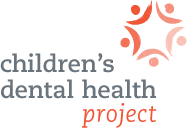The Children's Dental Health Project's blog
In ACA case, children’s dental coverage faces several threats
At the start of the summer, a panel of three judges heard arguments in Texas v. United States, a case that could determine the future of the Patient Protection and Affordable Care Act (ACA). Many have speculated on the potential outcome of the case and we could expect to hear a decision as soon as this month. Meanwhile, despite the Trump administration’s opposition to the ACA, recent reporting suggests officials may try to delay any immediate policy changes if the court strikes it down.
The ACA transformed the regulations guiding purchase, cost, and benefit design of private coverage. As CDHP has previously highlighted, the law moved oral health coverage forward for kids and families in many ways. This post by my colleague Colin Reusch reviews potential changes to the ACA’s many consumer safeguards in private coverage and marketplaces if the ACA were overturned.
I want to review some of the lesser-known policies that impact access to oral health coverage and care, which could change if the court invalidates or repeals the law.
1. Simplified eligibility and enrollment
For millions of American children and families, the ACA removed a number of barriers to finding and staying enrolled in public coverage. It required states to shift to streamlined eligibility and enrollment systems. In Medicaid and the Children’s Health Insurance Program (CHIP) these changes included eliminating in-person interviews, shifting to more electronic data sources, simplified income counting systems, and prohibiting asset tests for individuals with children who qualified for certain types of coverage.
For millions of American children and families, the ACA removed a number of barriers to finding and staying enrolled in public coverage.
Without the ACA, we could see a return of state obstacles to enrolling in coverage for children as well as their parents. This cross-family impact is important because data shows that when parents have coverage, kids are more likely to have coverage and get the care they need. The Urban Institute estimates that if the ACA were to be struck down, Medicaid enrollment would drop by about 15 million — including 3 million children who would lose access to comprehensive oral and medical coverage.
2. Ensuring stability for kids’ Medicaid/CHIP enrollment
Passage of the ACA included a requirement that states maintain certain coverage levels for children enrolled in Medicaid and CHIP, a policy called the maintenance of eligibility (MOE). This requires that states keep stable eligibility standards and enrollment procedures in their Medicaid and CHIP programs so families do not suddenly find coverage more difficult to gain or maintain. Congress passed two bills in 2018 that extended these policies through 2027. If the court rescinds the ACA, states could restrict Medicaid and CHIP eligibility for children through measures such as enrollment caps or freezes.
3. Improved Medicaid and CHIP coverage for children and young adults
 Before the ACA, states had the option to cover “stairstep kids” — or children age 6 to 18 in families just over the poverty level — with CHIP, while their younger siblings would be covered by Medicaid. In these states, families with multiple children had to manage things like differences in benefits, eligibility checks, or other details between two separate programs. This could be especially taxing if the programs were on different administrative schedules; had their own provider networks; or covered differing benefits for each child.
Before the ACA, states had the option to cover “stairstep kids” — or children age 6 to 18 in families just over the poverty level — with CHIP, while their younger siblings would be covered by Medicaid. In these states, families with multiple children had to manage things like differences in benefits, eligibility checks, or other details between two separate programs. This could be especially taxing if the programs were on different administrative schedules; had their own provider networks; or covered differing benefits for each child.
The ACA aligned coverage for children in families with incomes between 100 - 138% of the federal poverty line. It did so by directing states to ensure all children in these households received coverage through Medicaid, rather than other public coverage programs. If the ACA were overturned, more complex administrative burdens may again be imposed on low-wage families, making it even harder for them to find and receive oral health care.
The ACA also directed Medicaid programs to extend benefits to children and young people up to age 26 who are leaving foster care. This complemented the ACA’s provision that allowed parents with private coverage to continue covering young adults until age 26, creating some parity for young adults who might not have the same support available to them. Data show this is one aspect of the law that’s boosted oral health coverage for many people in recent years.
If the ACA were overturned, more complex administrative burdens may again be imposed on low-wage families, making it even harder for them to find and receive oral health care.
In fact, just last year a technical fix was signed into law which further clarified language in ACA statute. Lawmakers extended these benefits to young adults who were residing in states different from where they had been in foster care. Due to a lack of stability and support at such crucial periods of development, foster youth face a variety of obstacles to reaching their dreams, including lower likelihood of college graduation, higher rates of homelessness, lower average incomes, and much more. Without the ACA, these young adults would face one more barrier to stability and wellness.
4. Increased Opportunity for Public Input in Medicaid and CHIP Waivers
The ACA introduced federal requirements promoting greater transparency on Medicaid Section 1115 demonstration waivers. These waivers allow states to make certain changes to their Medicaid programs. After passage of the ACA, regulations were finalized that required public comment periods at the state and federal level, as well as public hearings, and the release of relevant materials to the public. Preserving these requirements is critical. They not only allow each of us to share input during the rulemaking process, but can have an even broader impact. Public comments have been referenced in recent court decisions to invalidate certain 1115 waivers when public concerns and processes seem to have been ignored.
Regardless of the outcome, it is worth remembering the real-life impact of the variety of seemingly “technical” changes the ACA implemented. And, the variety of state and federal programs that would be affected if the law is overturned.
For more information on these and other policies that could be impacted by the case, we recommend this great brief from our partners at the Georgetown University Center for Children and Families.
As we mention time and again, the US has made great strides in children’s oral health coverage. Thanks in part to the ACA, the past many years have seen continued, improved access and utilization of dental care among low income children. We would hate to see that hard work undone, risking children’s health and success.
